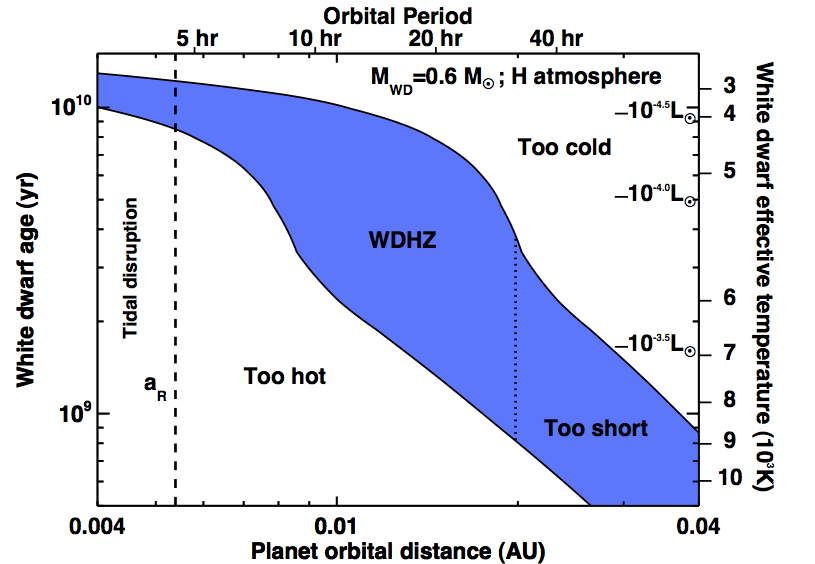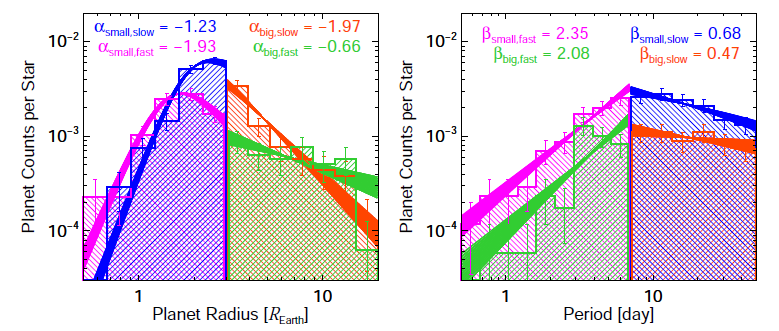Title: Seven temperate terrestrial planets around the nearby ultracool dwarf star TRAPPIST-1
Authors: Michaël Gillon, Amaury H. M. J. Triaud, Brice-Olivier Demory et al.
First Author’s Institution: Space Sciences, Technologies and Astrophysics Research (STAR) Institute, Université de Liège, Belgium
Status: Published in Nature, closed access
Please note that the ESO press release has an openly accessible version of the paper!
Back on May 12th, 2016, the discovery of three planets around the star TRAPPIST-1 was announced — in classic imaginative astronomer fashion, the planets were named b, c and d. It was a big deal, leading to a Nature paper, a NASA press release, and some speedy follow-up work taking a look at the atmospheres of b and c. The atmospheric studies confirmed that these two planets don’t host puffy and hydrogen/helium dominated atmospheres. This is notable, as a puffy hydrogen or helium atmosphere would make the planet uninhabitable. Incidentally, these were the first ever Earth-sized planets to have their atmospheres studied.
TRAPPIST-1 is an exciting system as it’s basically right in our astrophysical backyard: extremely close to us, at just 12 parsecs. For reference, even alpha Centauri, the nearest star system to us, is 1.34 parsecs away. Not only does this make the system feel tangible, it also makes follow-up and characterisation work much easier to carry out.
New planets!
As you may have read already, the new Nature paper that we’re discussing in this bite confirms the presence of several more planets in the TRAPPIST-1 system. The system now boasts seven planets, with orbital periods between 1.5 and 12 days. These planets are all confirmed directly by observing their transits — the dips of light as the planets pass directly in front of the star and block a small amount of the star’s light. These can be seen in Figure 1. The first two planets, b and c, are the same as in the previous paper. The authors do find, however, that the two transits previously ascribed to the d planet are actually two different planets! An extended period of observations from various ground- and space-based observatories confirms the presence of four different planets: d, e, f and g. Finally, a potential seventh planet, h, is also observed — but only one transit of this planet is seen, so it is a more tentative detection. Bored of the alphabet yet? Figure 1 shows the planets graphically instead — or try this interactive tool.

Figure 1, left: the transits for each of the seven planets. The colored spots show individual flux measurements, stacked over several transit observations, while the large circles show the binned data. Right: a graphic representation of the 7 orbiting planets. The grey zone indicates the region where the authors hypothesize oceans would be able to form. Figure 1 (lower panel) in the paper.
Planet tug-of-war
Dynamically, it’s very interesting to observe such a tightly packed system. For context, if the system was superimposed on our own system, all seven planets would all be closer than Mercury. The planets orbit in a so-called mean motion resonance, where the orbits of neighbouring planets are all small-integer ratios (b to c is 8/5, c to d is 5/3, etc.) and their closely matched orbits likely stabilise each other. These dynamic interactions mean that strong Transit Timing Variations (TTVs) are observed. In other words, the transits happen up to half an hour ‘early’ or ‘late’ on each individual orbit, as they are pulled and pushed by their neighbouring planets. This is useful to us, since it allows the masses to be measured. Without the TTV data, only the radii of each planet could be inferred from the transit data. The first six planets are confirmed to be rocky planets based on their masses and radii, although the composition of h is yet to be determined since only one transit has been observed and this makes the TTV analysis impossible for now!
Water, water everywhere?

Figure 2: A comparison of the TRAPPIST-1 system and our own solar system. Planets are shown by radius and incident solar flux, with the Earth and Venus also indicated. The flux of Mercury, Mars and Ceres is also shown, with their radii being too small for the y-axis of this plot. Figure 2 (lower panel) in the paper.
This system is particularly exciting as all seven planets are predicted to have equilibrium temperatures in the range where water is liquid. In other words, they’re considered to be in the habitable zone. Exoplanet climatology isn’t quite as simple as all that, though! TRAPPIST-1 is a tiny M-dwarf star, just 8% the mass of the Sun. The planets are all in very small orbits, with a full orbit taking 1.5 days for the closest planet and just 12 days for the furthest out planet. Interestingly, the smaller, fainter star coupled with these short orbits means that these planets receive pretty similar levels of radiation from their star as the solar system planets do from the Sun. As the authors point out, planets c, d and e are exposed to very similar levels of radiation as Venus, Earth and Mars respectively.
Since the planets are all so close to their star and are in such close proximity, they are likely tidally locked, as is the case for hot Jupiter type systems. In addition, the authors of the paper simulate the climates of each planet. They find that the b, c and d planets are all likely to undergo a runaway greenhouse scenario. The further out planets e, f and g, however, appear able to harbour water oceans. Even on the inner planets — b, c and d — it is possible that there is some liquid water on limited regions of the surface.
Before you get too excited, it’s worth noting that Venus, Mars and Earth are all in the ‘habitable zone’ of the Sun — just like these TRAPPIST-1 planets. As you’ve probably noticed, Earth is habitable but Venus and Mars are both pretty unpleasant, with Venus hosting sulfuric acid clouds and Mars plummeting to -73 centigrade at night. Check out this astrobites article for more analysis of ‘Venus as an exoplanet’.
So, what next?
As it happens, Kepler is actually staring at this system right now: they have a 70-day campaign on this patch of sky, from December 15th 2016 through to March 4th 2017. The Kepler data will be made publically available immediately after the campaign. Not only does this mean you can get your hands dirty playing with the data if you like, but you can also bet that several exoplanet teams around the world will be itching to do some of their own analysis. We’re certainly likely to be hearing more science from the system soon!
The James Webb Space Telescope will almost certainly have a go at characterising these atmospheres after it launches in 2018. However, this is going to be hard work. David Wilson wrote an astrobite about the difficulties observing the atmospheres of TRAPPIST-1 b and c, and the situation for the new planets is likely to be similar.
SETI, the Search for Extra-Terrestrial Life, have already pointed their antennae towards TRAPPIST-1, just in case there are aliens trying to talk to us. Of course, the success of this mission would rely on (a) the planets being habitable, (b) the planets being inhabited, (c) the alien life having evolved to intelligence and (d) that intelligence emitting the sort of signals SETI look for. Well, it’s worth a shot, anyway!
Looking further ahead, next-generation ground based telescopes like the E-ELT, set to be completed in 2025, will be able to detect water on these planets and carry out further atmospheric characterisation.
It’s certainly clear that TRAPPIST-1 will be under a lot more scrutiny in the near future!





Nice bite, Elisabeth. Thank you.
Some more info:
http://www.nature.com/news/these-seven-alien-worlds-could-help-explain-how-planets-form-1.21512
http://www.eso.org/public/unitedkingdom/news/eso1706/
NB: This ESO press release has a link to a DOWNLOAD of the Nature paper.
More detailed info from the lead authors of the paper.
Cambridge University press release
http://www.ast.cam.ac.uk/content/newly.discovered.planets.could.have.water.their.surfaces
University of Liège press release.
In French
http://thema.ulg.ac.be/spatial/sept-merveilles-de-trappist-1/
In English
http://thema.ulg.ac.be/spatial/en/sept-merveilles-de-trappist-1-2/
This is the site of the project itself.
http://www.trappist.one/#about
It has some fantastic stories here – marvellous science communication (both for children AND adults…)
http://www.trappist.one/#stories.
thankyou!
There is also an ESO press release which has the great advantage of linking to an accessible version of the original paper: http://www.eso.org/public/news/eso1706/
Thanks! I didn’t realise a public version was available – now linked in the article.
Perhaps we could look for Laser Flashes for a method of communication from these planets
It’s an interesting idea. The biggest problem would be that you’d need someone on the planet to be emitting an incredibly strong laser beam for us to pick up the signal – or even a beam directed at us. There’s lots of info on the SETI website about the different signals they observe for – take a look at https://www.seti.org/faq if you’re interested!
Thanks for this post. Would the moons of Jupiter be a better analogy for this system than our entire solar system? Are the orbital periods and interactions among the exoplanets relatively similar to Europa, etc?
Dynamically, definitely! They’re very closely packed with mean motion resonances, as the moons are around Jupiter. Of course, the M-dwarf star is at around 2500K, much hotter than Jupiter (450K) – so in terms of flux, it’s more similar to the solar system.
Excellent explanation of the new findings! So exciting! Thank you
“…the transits happen up to half an hour ‘early’ or ‘late’ on each individual orbit, as they are pulled and pushed by their neighbouring planets.”
I can’t think of any situation where a gravitational force would cause a planet to be “pushed.” Am I missing something?
Thanks for a great post. Transit timing variations are going ( indeed already have ) been used to calculate these planets’ masses . This is obviously crucial, certainly in determining their bulk densities and thus beginning the characterisation process . The early error bars are large though . As with estimating radius I’m sure that the more transits per planet the better and both Kepler and Spitzer later in the year will help achieve this . I’m uncertain however as to how accurately TTV will be at estimating mass here given the multi body system and complex gravitational interactions described. ( versus say conventional ” msini” RV spectroscopy which obviously isn’t currently an option ). Most of the published literature focuses on two body systems . Can you clarify ?